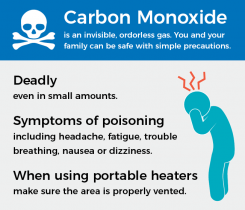

Standard oxygen therapy may be given if you've been exposed to a high level of carbon monoxide or have severe symptoms of poisoning. If your poisoning is mild, it won't usually require hospital treatment, but it's still important to seek advice from a doctor. If you're a smoker, you will already have a higher level of this chemical in your blood, which can make it more difficult to interpret the results. A reading of over 30% indicates a severe case. But if there's a possibility you've been exposed to high levels of the poisonous gas, go straight to your nearest hospital's accident and emergency (A&E) department.ĭoctors will perform a blood test which will confirm the amount of carboxyhaemoglobin - a chemical formed when carbon monoxide binds to red blood cells. If you think you've been exposed to low levels of carbon monoxide, seek advice from your GP. Confusion, personality changes and symptoms similar to those of Parkinson's disease can all occur.ĭiagnosing and treating carbon monoxide poisoning More severe cases of carbon monoxide poisoning can lead to:Ĭarbon monoxide poisoning can often suddenly cause serious symptoms weeks after you've apparently recovered from an acute poisoning episode. If you're exposed to low levels of carbon monoxide over long periods, you can develop any of these symptoms along with: Your symptoms are worse at home and better when you're outside.Other people in the house have the same symptoms or.If you have vague symptoms, it is more likely that carbon monoxide poisoning is the cause if: These are all too often mistaken for flu or tummy bugs, with occasionally fatal consequences. Milder symptoms of carbon monoxide poisoning include: Living in any accommodation that is not a detached house means there is a risk of carbon monoxide from neighbouring properties.

It is important to remember that even if you have your appliances serviced regularly, your neighbours may not. Use your gas stove or oven to heat a room as well as to cook, or have brought a barbecue inside a tent for heat.
/carbon_monoxide_poisoning_diagnosis-5ae776243de4230037a25b3f.png)


 0 kommentar(er)
0 kommentar(er)
